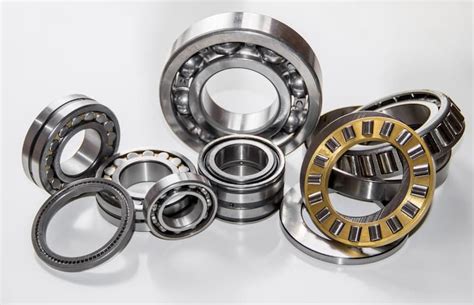Bearing Trigonometry: A Comprehensive Guide to Determining Bearings
Bearings are essential for navigation, surveying, and other applications where determining direction is crucial. Bearing trigonometry involves using trigonometric functions to calculate angles between points, making it a fundamental tool in these fields. This comprehensive guide will delve into the concepts, applications, and techniques of bearing trigonometry, providing a thorough understanding of this essential subject.
Concepts of Bearing Trigonometry
A bearing represents the horizontal angle between a reference direction and a line connecting two points. In navigation, bearings are typically measured clockwise from true north or magnetic north.
Trigonometric functions, such as sine, cosine, and tangent, establish the relationship between the sides and angles of a triangle. In bearing trigonometry, these functions are used to calculate the bearings of lines and the distances between points.
Types of Bearings
Bearings are classified into three main types:

-
True Bearings: Measured from true north, a fixed reference point on the Earth's surface.
-
Magnetic Bearings: Measured from magnetic north, which aligns with the Earth's magnetic field and may vary from true north.
-
Relative Bearings: Measured from an arbitrary reference direction, such as the bow of a ship or the front of a vehicle.
Applications of Bearing Trigonometry
Bearing trigonometry finds applications in various fields, including:
-
Navigation: Calculating the direction and distance to travel between destinations on a map or using GPS systems.
-
Surveying: Establishing the location and boundaries of properties by measuring angles and distances.
-
Astronomy: Determining the positions of celestial bodies by measuring their bearings relative to fixed reference stars.
-
Robotics: Guiding autonomous vehicles and robots by calculating the angles and distances to obstacles and target destinations.
Techniques in Bearing Trigonometry
Solving Bearing Problems
To solve bearing problems, the following steps are typically used:

-
Identify the reference direction: Determine the starting point and the direction from which bearings are being measured.
-
Calculate the bearing: Use trigonometric functions to calculate the angle between the reference direction and the line connecting the two points.
-
Determine the distance: If necessary, use trigonometric functions and known distances to calculate the distance between the points.
Common Mistakes to Avoid
When working with bearing trigonometry, it is important to avoid common mistakes, such as:
-
Confusing true bearings with magnetic bearings: Ensure that the correct reference direction is being used for the application.
-
Using the wrong trigonometric function: Carefully select the appropriate trigonometric function based on the given information.
-
Ignoring the quadrant: Consider the quadrant in which the angle lies when interpreting the bearing value.
How to Use Bearing Trigonometry Step-by-Step
To use bearing trigonometry effectively, follow these steps:

-
Draw a diagram: Sketch a diagram that represents the situation, including lines, angles, and known distances.
-
Identify the reference direction: Determine the starting point and the direction from which you want to measure bearings.
-
Use trigonometry: Apply sine, cosine, or tangent functions to calculate the bearing or the distance based on the known values.
-
Interpret the results: Determine the bearing angle or the distance between the points.
Pros and Cons of Bearing Trigonometry
Pros:
-
Accuracy: Provides precise bearings and distances, crucial for navigation and surveying.
-
Versatility: Can be used in various applications, from map navigation to robotics.
-
Established: Well-established mathematical principles, ensuring reliability and consistency.
Cons:

-
Complexity: Can be challenging to apply, especially for complex bearing problems.
-
Limited to two dimensions: Cannot account for vertical angles or altitude changes.
-
Requires tools: May require specialized tools, such as protractors or calculators, for accurate calculations.
Frequently Asked Questions (FAQs)
Q: What is the difference between a true bearing and a magnetic bearing?
A: A true bearing is measured from true north, while a magnetic bearing is measured from magnetic north. Magnetic north may vary from true north due to the Earth's magnetic field.
Q: What is the quadrant rule for bearing trigonometry?
A: The quadrant rule specifies how to interpret bearing angles based on the quadrant in which the angle lies on the unit circle.
Q: How do I use a protractor to measure bearings?
A: Align the protractor's baseline with the reference direction and use the protractor's markings to read the bearing clockwise.
Q: What are the applications of bearing trigonometry in robotics?
A: In robotics, bearing trigonometry is used to calculate the angles and distances to obstacles and target destinations, guiding autonomous vehicles and robots.
Q: How do I avoid making mistakes in solving bearing trigonometry problems?
A: Ensure that the correct reference direction is used, choose the appropriate trigonometric function, and consider the quadrant of the angle.
Q: What are some best practices for using bearing trigonometry?
A: Draw a diagram, use a protractor for precise measurements, and double-check calculations to minimize errors.
Conclusion
Bearing trigonometry is an essential tool for determining bearings and distances, with applications in various fields. By understanding its concepts, techniques, and potential pitfalls, individuals can effectively use bearing trigonometry to solve problems and make accurate calculations. Whether navigating through unknown terrain or guiding robots through complex environments, bearing trigonometry provides a solid foundation for precise and informed decision-making.
